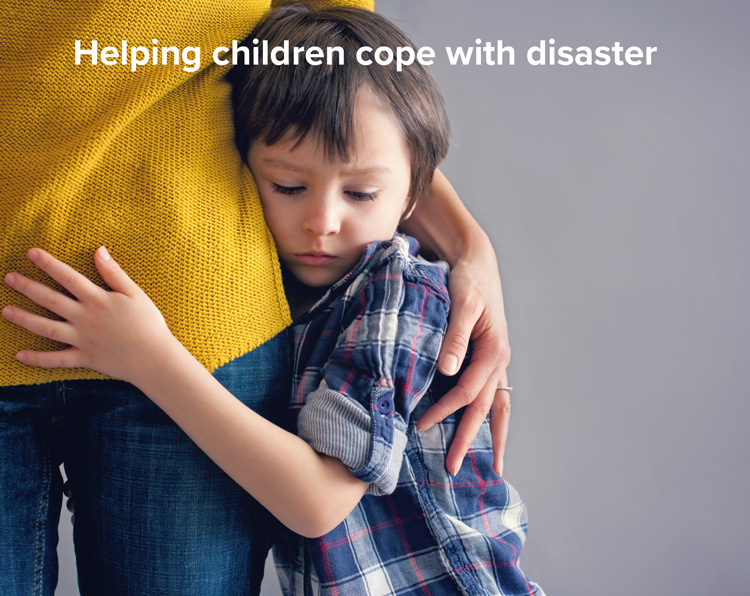- Go to the Resources for Living website https://www.resourcesforliving.com/login
- Login with your company/organization Username: ChristianaCare; Password: EAP
- Select from a comprehensive set of resources in addition to the ones referenced below
- Click on the + sign to open and close the accordion
RESOURCES
Disasters can be scary for anyone. Children think about the world in a different way than adults. And they may
have a hard time letting you know how they feel or what they need.
Remember that children often look to adults to learn how to respond. So they may be affected by your reactions. Be open and honest with your children about your concerns, but try not to alarm or panic them.
Children’s behavior is based on their age and how directly they were affected. Keep reading to learn how children
may respond to a crisis and how you can support them.

Learn how to see the warning signs. You can seek help from a doctor or counselor. And you can call us. We’re here 24/7 to support you and your family members after a crisis.
Click here to view and download Tips for the following age groups:- Infants and toddlers
- Preschoolers (ages 3 to 5)
- School-aged children (ages 5 to 12)
- Adolescents (ages 13 to 18)

Feeling safe is important. It lets us thrive and grow. But violence can make us feel like we just need to survive. So how do you get back to being you?

It’s natural to be upset by a violent event — whether you’re directly or indirectly involved. We’re here for you. Confidential help is available 24 hours a day, 7 days a week.
Click here to view and download the following tips:- How you might be affected
- How to cope
- When to get help

A crisis doesn’t just impact your health and safety. It can affect your emotional well-being. This guide will help you find the tools to cope with the emotional aftershocks of an upsetting event.
Contents include:- Emotional recovery
- Coping with acute stress
- Reactions to stress
- Beliefs turned upside down
- What can I do after a crisis?
- Stages of recovery from trauma and loss
- Helping children cope with crisis
- Helping children grieve
- Supporting others after a crisis

There’s no question these are scary times. We’re suffering through chaotic aftershocks of a terrible act of violence. Is it any wonder we’re experiencing very strong feelings now?

Remember, millions of people are impacted by these events. Whatever you’re feeling, you’re not alone! We’re here to help.
Tips in this resource include:- Common feelings in uncommon times
- What you can do to deal with your feelings
- Accept them
- Express them
- Explore them

PTSD stands for post-traumatic stress disorder. PTSD received a lot of attention as a common problem affecting war veterans,
but it can impact anyone.

You may suffer from PTSD if you personally experienced trauma. And you may also have symptoms if you witnessed, heard about or watched TV coverage of traumatic events.
Key tips included in this resource include:- Symptoms of PTSD
- Getting help for PTSD
- Support is key

These days, we all need inner strength to deal with the issues confronting us. We need coping skills and resilience. But where do we find them?
Tips included with this resource:- Look within yourself
- What is inner strength?
- How to boost your inner strength

Resources include:

- Government Resources
- U.S. Embassy in Ukraine
- Mental Health
- SAMHSA’s Disaster Distress Helpline
- NAMI
- 211 United Way
- Charitable Giving to Ukraine
- United Help Ukraine
- International Committee of the Red Cross
- UNICEF
- Save the Children
- Lutheran Immigration and Refugee Services
- Lifeline Ukraine
- Doctors Without Borders
- Evaluating Charitable Giving Options
- Charity Navigator
- Give Well

We like to make sense of things. During times of stress, this feels even more important. Knowing about the different stages of grief can help you feel “normal.” It can help to find order in a time of confusion.
Stages included in this resource:

- Stage 1: Shock, denial and disbelief
- Stage 2: Anger and depression
- Stage 3: Understanding and accepting

